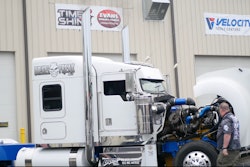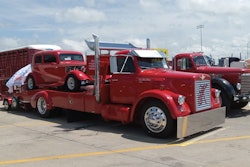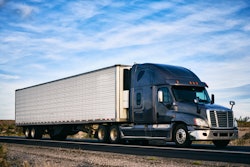Just about every time the U.S. government hands the trucking industry a new mandate, especially an emissions-related one, somebody somewhere says, "What is this, communist China?"
Of course, comparing ever-stricter emissions limits to Beijing's centrally planned economy might be a bit melodramatic.
On the flip side, for Americans who push a transition to zero-emission trucks, it's easy to bemoan the U.S.'s patchwork of rules and regulations as a barrier. Yet any ZEV transition is in no way an easy problem to tackle.
That's also been the case in China. And surprisingly, that's not all Chinese trucking has in common with the U.S. industry.
That's according to Shirly Ju, the principal research analyst at Interact Analysis, an international market research agency, who is based in China.
"In China, there is massive or numerous individual owners of trucks, not only heavy duty trucks, but towing vehicles or medium or light duty trucks, too," she said.
Sound familiar?
People love to compare and contrast U.S. trucking to the sleek cabovers and narrow roads that dominate Europe. But China, a big country with lots of manufacturing and a strong owner-operator population, more closely compares. Ju said that in China, big steel, mining and cement companies mostly run their own private fleets for short hauls around their area of operation.

Long-haul trucking in China, though, as in the U.S., is "dominated by small- and medium-sized fleets," she said.
The similarities don't stop there. Even China, where the state holds near total control over private businesses, has had a hard time switching to zero emissions vehicles, despite being among countries leading the world in the production of both hydrogen and battery technology.
"There is a transition happening China," said Ju. That transition, thus far, has taken the shape of government mandates and incentives to push truck users into zero emissions options.
A recent blog post from Interact Analysis detailed China’s boom in the production of hydrogen fuel cell vehicles and associated refueling stations. Chinese provinces and cities have planned 1,200 hydrogen stations around the country by 2025 -- that's more than exist in the world today, period.
Still, battery-electric vehicles account for the majority of zero-emissions vehicles in China, Ju said, with hydrogen vehicles, passenger and commercial combined, totaling "less than 10,000 units.".
The incentives include loans, which Ju said are available to small businesses and owner-operators.
Truck makers, "together with partners like financing institutions or companies and the state, allow carriers to lease or rent vehicles to the end user, so they don't need to pay the full up-front price," she said. "That's a popular method to use BEVs, which cost less to operate with electricity than diesel does."
China's electricity generation sill largely comes from fossil fuels, so the push for truly clean trucking has a long way to go, but the other big incentive comes from a kind of supercharged congestion-pricing scheme in inner cities. Small businesses are incentivized to adopt "BEV trucks in China because of a policy in favor of using new energy in commercial vehicles," said Ju. "Those operations with BEV truck owners enjoy the 'right of way' -- they can use their vehicles in the main downtown parts of the city."
It can be hard for Americans to imagine, because New York City already outright bans 53 foot trailers, and big trucks often get regulated out of city centers. In China, the prohibition on diesel trucks in downtown areas also applies to medium- and light-duty commercial trucks.
The U.S. maybe has one or two cities with more than 10 million people (NYC, L.A. including metro area). China has 17. Within a 30-minute train ride of Shanghai alone, 250 million people live. Trucking to stock the shops and markets in those big cities is big business. Keeping them clean with that many lungs around has become a priority for China.
But even with 1.3 billion people and essentially a single decision-making body, China again mirrors the U.S. in the ways it falls short.
Even with a huge share of global battery production and state mandates to lower costs and boost production, China, like the U.S., relies on international trade to get some of the necessary supplies.
And those 1,200 hydrogen fueling stations by 2025? That may or may not happen.
"There’s a lot of challenges ahead," said Ju. "The realities are the production fell behind the target, not only for infrastructure but also for the overall hydrogen fuel cell population."
[Related: Tesla's Semi blows past diesels uphill, but do owner-operators care?]










